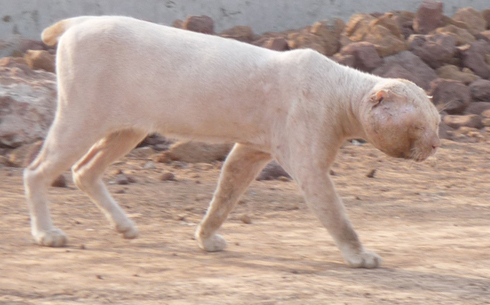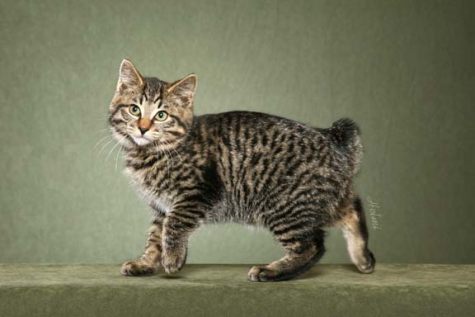
January 22, 2009
Dr. Darren Naish evidences again what often happens when one gets into a bit of a reflective wave of postings. He finds he is talking about another strange cat today, via some new images forwarded his way. He shared the news with me early this morning.
Take a look at this one.


Darren writes:
Yesterday, I received some very interesting photos from Ryan Norris at the University of Vermont. As you can see, these photos feature a cat. A very, very weird cat.
* * *
Apparently this animal was photographed in south-eastern Yemen where it was frequenting a building site. The photos were taken by Jim Larsen. He reported that the cat wasn’t just hanging around the site, it was also chewing on cables; so much so that they had to take measures to stop the cables getting damaged further. That sounds pretty unlikely to me. In fact, it has that urban-myth quality about it, but what the hell.
I don’t think there’s any doubt that the animal in the photos is for real. Though no obvious scale is evident, it looks larger than a domestic cat.
For more of what Darren has to say about it, read here.
Look at the width of that head and the configuration of those ears?

It immediately reminded of a Pallas’ cat (or Pallas cat, Felis manul), which is shown above, in one very healthy example from the San Diego zoo. Of course, the sense was only vaguely like a Pallas felid, because the overall hairiness, face, eyes, and tail of the Felis manul are much different than the pictured Yemen mystery cat.
Also, of course, there’s the matter of the shortened tail.
As far as domestic cats with small tails, there are several breeds nowadays with this trait, including Manx (those with no tails and the “Stumpy” with a small tail), Pixie Bob, Japanese Bobtail, and Kurilian Bobtail.
The last one, the Kurilian Bobtail (Kurilian, Curilsk Bobtailis, Kuril Bobtail) is a “natural” cat and a “mutated” cat. The breed, according to “Pictures of Cats,” is little known in the West but is the 3rd most popular breed in Russia, where there are about 40 breeding sites. The breed’s geographical origin is the Kuril and Sakhalin Islands, in the northwestern Pacific.

A Kurilian Bobtail kitten. Photograph by TAIGA/Helmi Flick.

A manx breed cat with a stumpy tail. The cat, properly named Inka but more frequently referred to by her nickname Inkku, lived in Töölö, Helsinki, Finland. Photograph by Jonik.
So, it perhaps, are we to think this strange Yemen cat is nothing more than a mistreated, downtrodden, somewhat leucistic, shorthaired, bobtailed, feral domestic cat, after all? That chews on cables?

What do you think?
About Loren Coleman
Loren Coleman is one of the world’s leading cryptozoologists, some say “the” leading living cryptozoologist. Certainly, he is acknowledged as the current living American researcher and writer who has most popularized cryptozoology in the late 20th and early 21st centuries.
Starting his fieldwork and investigations in 1960, after traveling and trekking extensively in pursuit of cryptozoological mysteries, Coleman began writing to share his experiences in 1969. An honorary member of Ivan T. Sanderson’s Society for the Investigation of the Unexplained in the 1970s, Coleman has been bestowed with similar honorary memberships of the North Idaho College Cryptozoology Club in 1983, and in subsequent years, that of the British Columbia Scientific Cryptozoology Club, CryptoSafari International, and other international organizations. He was also a Life Member and Benefactor of the International Society of Cryptozoology (now-defunct).
Loren Coleman’s daily blog, as a member of the Cryptomundo Team, served as an ongoing avenue of communication for the ever-growing body of cryptozoo news from 2005 through 2013. He returned as an infrequent contributor beginning Halloween week of 2015.
Coleman is the founder in 2003, and current director of the International Cryptozoology Museum in Portland, Maine.
Filed under Alien Big Cats, Breaking News, Cryptotourism, CryptoZoo News, Cryptozoologists, Cryptozoology, Mystery Cats, Pop Culture